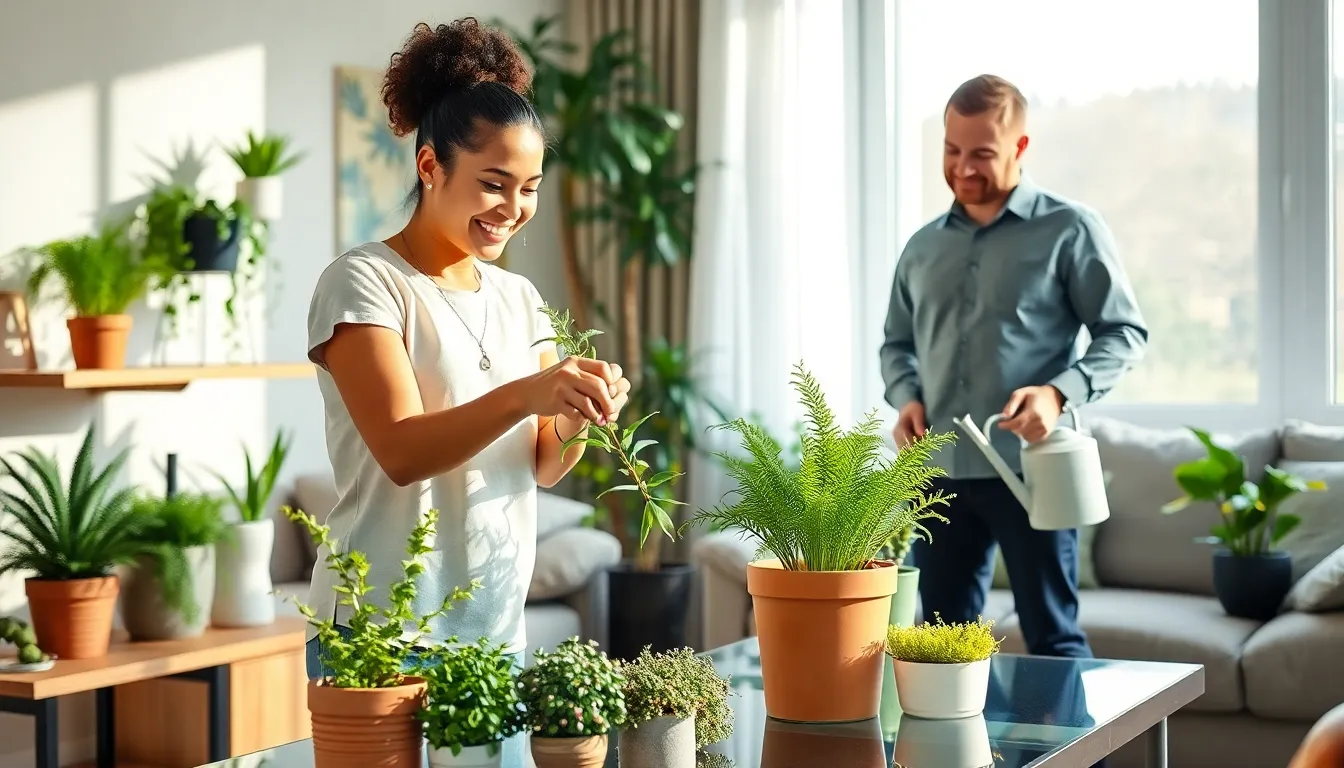Have you ever thought about turning your home into a lush paradise but felt like the only green thumb you’ve got is the one that comes from paint? Worry not. Indoor gardening for beginners is not just for horticultural artists: anyone can do it. With a sprinkle of patience and a dash of enthusiasm, you’ll be ready to cultivate your indoor forest in no time. Plus, who wouldn’t want a bit of greenery to help detox their air and spruce up their space right? Let’s jump into the world of indoor gardening together – it’s easier than you think.
Indoor Gardening for Beginners

Indoor gardening is not just a quirky hobby: it’s a rewarding try that transforms your home and brings numerous benefits.
Benefits of Indoor Gardening
For starters, indoor gardening allows individuals to engage with nature right from their living room. Connecting with plants can improve mood and even boost productivity. Not to mention, home-grown herbs and veggies can save a trip to the grocery store. Talk about farm-to-table.
Psychological and Emotional Benefits
Studies show that nurturing plants can decrease stress, anxiety, and depression. Giving attention to plants creates a sense of purpose. It’s like having a pet that doesn’t bark or require walks. Some people even find that their creativity flourishes among leafy friends, so keep those potting gloves handy.
Environmental Benefits
Indoor plants play a vital role in purifying the air. They absorb toxins and release oxygen, making living spaces healthier. Isn’t it incredible how a simple fern or spider plant can contribute to a cleaner home environment? Plus, growing indoors conserves space and, in many cases, time, as it eliminates the need for outdoor upkeep.
Getting Started With Indoor Gardening
Jumping into the world of indoor gardening is simpler than you might think.
Choosing the Right Space
The first step is identifying suitable spots for your future plants. They’ll need good light, humidity, and a little love. Windowsills often provide the best natural light, but it’s essential to watch for drafts that may harm sensitive plants. Ideally, choose a warm, sunny corner where plants can comfortably reside.
Essential Tools and Supplies
Before growing anything, make sure you’ve got the right tools. A few essentials include pots with drainage holes, potting soil, watering can, and a good set of gardening gloves. Don’t forget to grab a spray bottle for misting, some plants absolutely thrive on humidity.
Selecting Suitable Plants for Beginners
Now comes the fun part, choosing the plants.
Best Indoor Plants for Beginners
For those just starting, it’s wise to stick with low-maintenance plants. Some great options include pothos, snake plants, and peace lilies. These greens not only tolerate a range of conditions, but they thrive even when neglected (not that we recommend neglecting them.). They’re forgiving companions for those still finding their inner gardener.
Plant Care Basics
Once you’ve selected your botanical buddies, it’s time to learn how to care for them.
Watering and Feeding Your Plants
Knowing how much to water can be crucial. Too much water can lead to soggy roots while too little can leave them parched. A good rule of thumb: stick your finger into the soil. If it’s dry an inch deep, it’s time to water. As for feeding, most plants benefit from a diluted liquid fertilizer every few weeks during the growing season.
Lighting Requirements and Solutions
Understanding each plant’s lighting needs is key. Some thrive in bright light: others prefer low light. Artificial grow lights can fill the gap where natural light is limited, ensuring that your plants receive sufficient light, no matter the season.
Common Indoor Gardening Challenges
Every gardener faces challenges, but fear not.
Pest Management Tips
Pests can be a hassle, but spotting them early can mitigate the damage. Regularly inspect your plants for signs of pests like aphids or spider mites. If trouble arises, consider introducing beneficial insects or using insecticidal soap for a quick fix.
Dealing With Plant Diseases
Even the most avid plant parent might deal with plant diseases. Yellowing leaves? Droopy stems? These could be signs of root rot or other issues. One effective way to avoid diseases is ensuring proper drainage, cleanliness, and air circulation around your plants.

